2022 Annual Report
Uniting Stakeholders to Build a Resilient Future — NEEA’s Annual Report highlights activities that support diverse energy needs across the region.
Letter to the Region
2022 marked an exciting and dynamic time for the alliance. The energy industry is undergoing a period of rapid and, in some areas, evolutionary change. At its core, energy efficiency enables the region to meet its energy needs and do so in low cost and affordable ways that benefit consumers and businesses. And today, more than ever, energy efficiency is a uniting force that delivers multiple dimensions of value across the region: It reduces peak demand, supports grid resilience and reliability, contributes to emissions reductions, improves health outcomes, supports workforce development, helps the region withstand increasing unpredictability from extreme weather events, and more.
This value brings us together and serves to strengthen the alliance to keep pace with this rapid evolution of the energy industry. While individual communities may face unique challenges, it is through a commitment to innovation and collaboration that the alliance finds common solutions that benefit not only these communities, but the entire region.
Through this year’s collective efforts, the alliance:
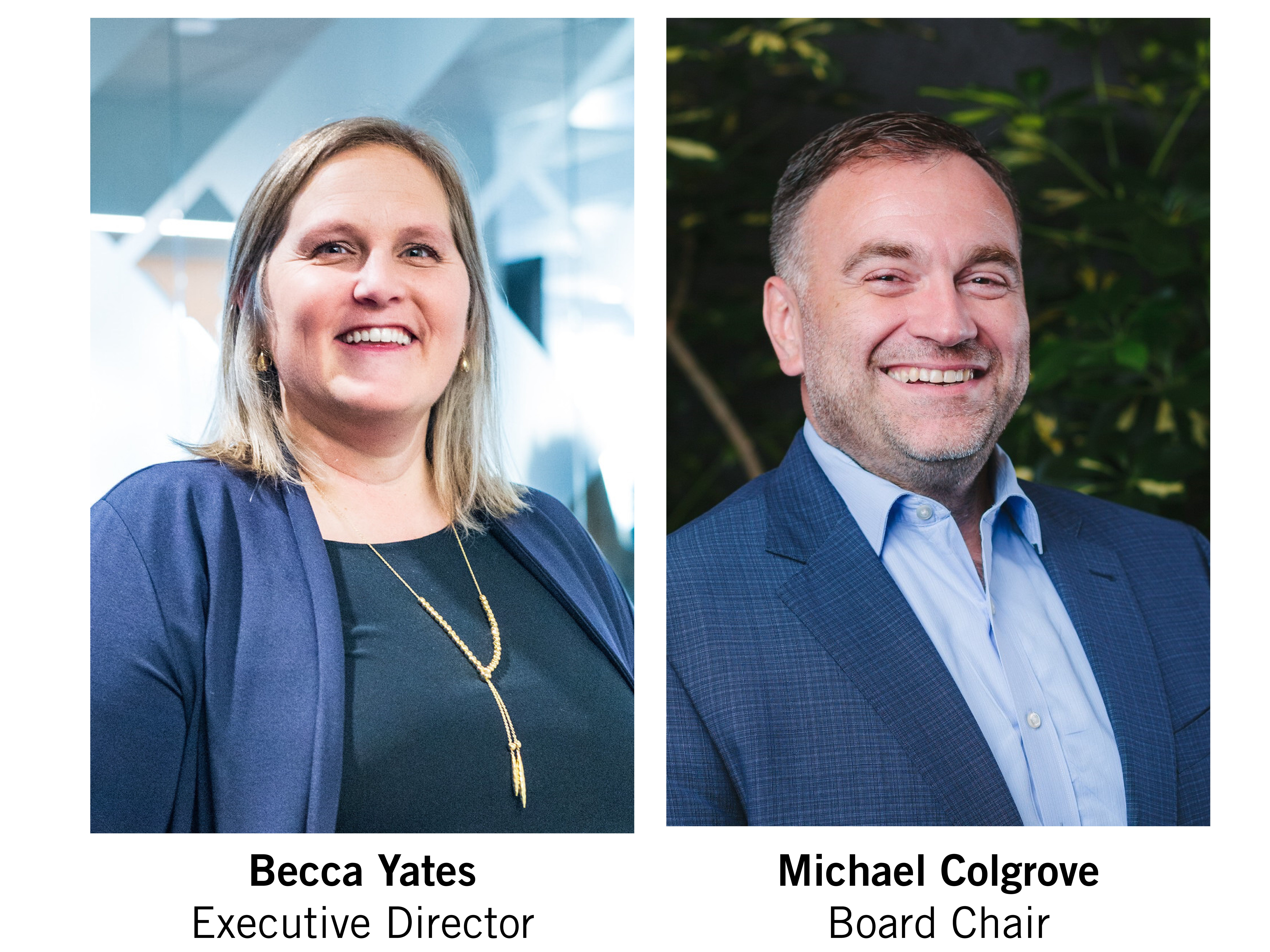
- Collaborated to improve the efficiency of televisions by partnering with TV manufacturers to develop a new test method for assessing TV energy use. The new test method more accurately reflects actual energy use and was adopted into the ENERGY STAR Version 9 TV specification, which took effect in late 2022.
- Provided data and market knowledge from the Northwest Energy-Efficient Manufactured Housing Program – a long-term collaboration between the Bonneville Power Administration, NEEA, Energy Trust of Oregon, Northwest electric utilities, Northwest-based manufactured home builders, and other partners – to the U.S. Department of Energy (U.S. DOE), resulting in the announcement from the U.S. DOE and Housing and Urban Development (HUD) of the first new energy efficiency update for manufactured homes in 25 years.
- Recruited 1,000+ homes to participate in the Residential Building Stock Assessment, a regional research study conducted by the alliance roughly every five years that is designed to collect information on home characteristics in the Northwest. Each participant home provides detailed data on hundreds of building and equipment characteristics, enabling the identification of energy efficiency opportunities and providing data for utility planning purposes.
- Participated in the development of a joint recommendation with industry partners to the U.S. DOE as input to the Federal standards public process for heat pump water heaters. As part of these conversations, NEEA brought data, research and real-world validation of the technology from across the Northwest, including those from cold-climate and rural markets. This work builds on the first Northern Climate Water Heater specification that NEEA created in 2009 to ensure cold-climate performance. Since then, NEEA has worked with both the region and market to iterate on it, based on real-world performance as product improvements were made over the last 13-14 years through voluntary programs. Incorporating the Advanced Water Heating Specification (AWHS) as the industry standard is an important step to ensure that future Federal standards for water heaters recognize Northwest climates and consumer needs.
- Concluded an efficient gas rooftop unit field trial in collaboration with Montana State University’s Integrated Design Lab that demonstrated a 40% reduction in small-to-medium-sized commercial building HVAC energy use.
- Co-created 38.7 aMW of electric energy savings and 827,379 Therms of natural gas savings in 2022, equivalent to the amount of energy needed to power more than 26,000 homes per year.
2022 also marked a transition in leadership for NEEA. After 11 years of serving as Executive Director, Susan E. Stratton wrapped up her tenure at NEEA and embarked on a well-deserved retirement. Through her leadership, Stratton led the alliance through two five-year funding cycles and helped NEEA to establish Market Transformation as a nationwide practice for energy efficiency.
In addition, NEEA began its 5-year Business Planning process for its Cycle 7 (2025 – 2029) Business Plan in 2022. NEEA’s 2025-2029 Strategic and Business Plans build on the alliance’s more than 25-year history of success. These plans outline how the alliance will continue to deliver energy efficiency solutions and transform the market to the benefit of all Northwest customers.
On the horizon the alliance will continue to seek excellence in driving market change leading to the faster and greater adoption of energy-efficient products and services and will work to meet the growing demands for a sustainable Northwest.
2022 Portfolio Highlights
Investments in energy efficiency drive innovation and economic growth. Improving energy efficiency and reducing energy consumption leads to a secure future for Idaho and our country. Energy efficiency will enable Idaho to continue to meet the needs of its expanding communities while keeping energy rates low, and I appreciate the Northwest Energy Efficiency Alliance for its leadership in bringing together broad stakeholders to promote smart, cost-effective and responsible energy practices.I appreciate Northwest Energy Efficiency Alliance for bringing the region together to support our energy future.
– Brad Little, Governor of Idaho
2022 Annual Report Success Stories:
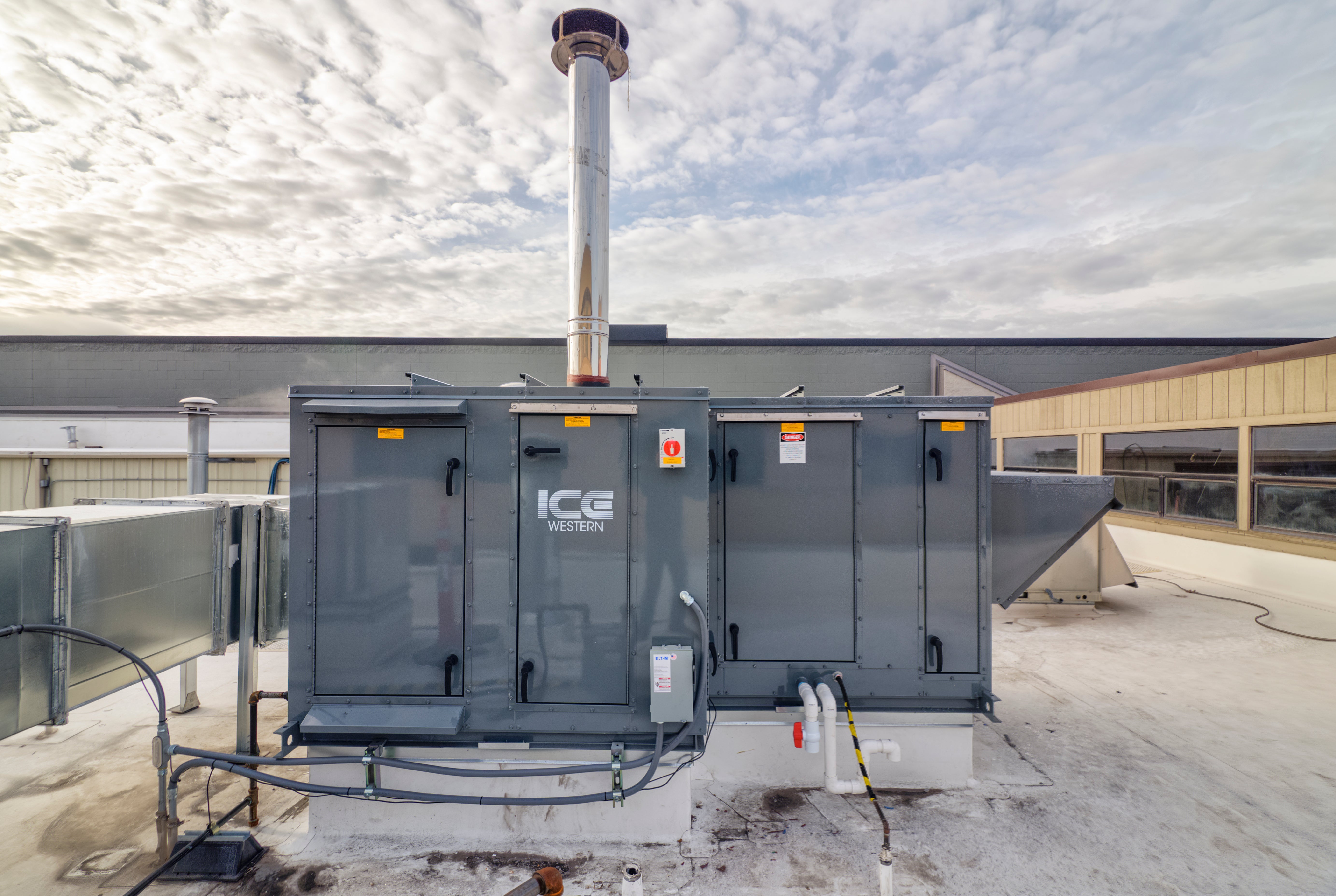
Offering All the Convenience Without the Waste
Efficient Rooftop Units
Due to their convenient and accessible packaging of heating, cooling and ventilation equipment in a single box, rooftop units (RTUs) have become a common HVAC solution for commercial buildings in the Northwest. Unfortunately, most RTUs use more energy than necessary, and when they die, they are simply replaced by another inefficient RTU.
In 2022, NEEA evaluated a promising technology known as efficient gas RTUs—a solution that combines a variety of energy-saving features to solve the problem of RTU waste without downgrading convenience. Partnering with Montana State University’s Integrated Design Lab, the alliance concluded a nine-month field trial that demonstrated a 40% reduction in small-to-medium-sized commercial building HVAC energy use. With additional field trials currently taking place in Portland, the alliance will continue to evaluate this technology across a variety of building and equipment types to further prove its energy-saving efficacy in northern climates.

Ushering in a New Age of Efficiency
Televisions
The alliance and its partners share a long and influential history advancing television efficiency for Northwest consumers, and 2022 was a impactful year for this transformational work.
In January 2022, ENERGY STAR® unveiled its final Version 9 TV specification, which introduced a NEEA-developed method for testing television efficiency that is far more accurate than the previous approach. By more precisely reflecting real-life television energy use, the CTA/ANSI-2037C testing method is swiftly moving the needle: As of October 2022, it is required for use by all television manufacturers when evaluating the efficiency of their products, and it has already influenced a new class of efficient televisions that hit Northwest shelves in 2023.
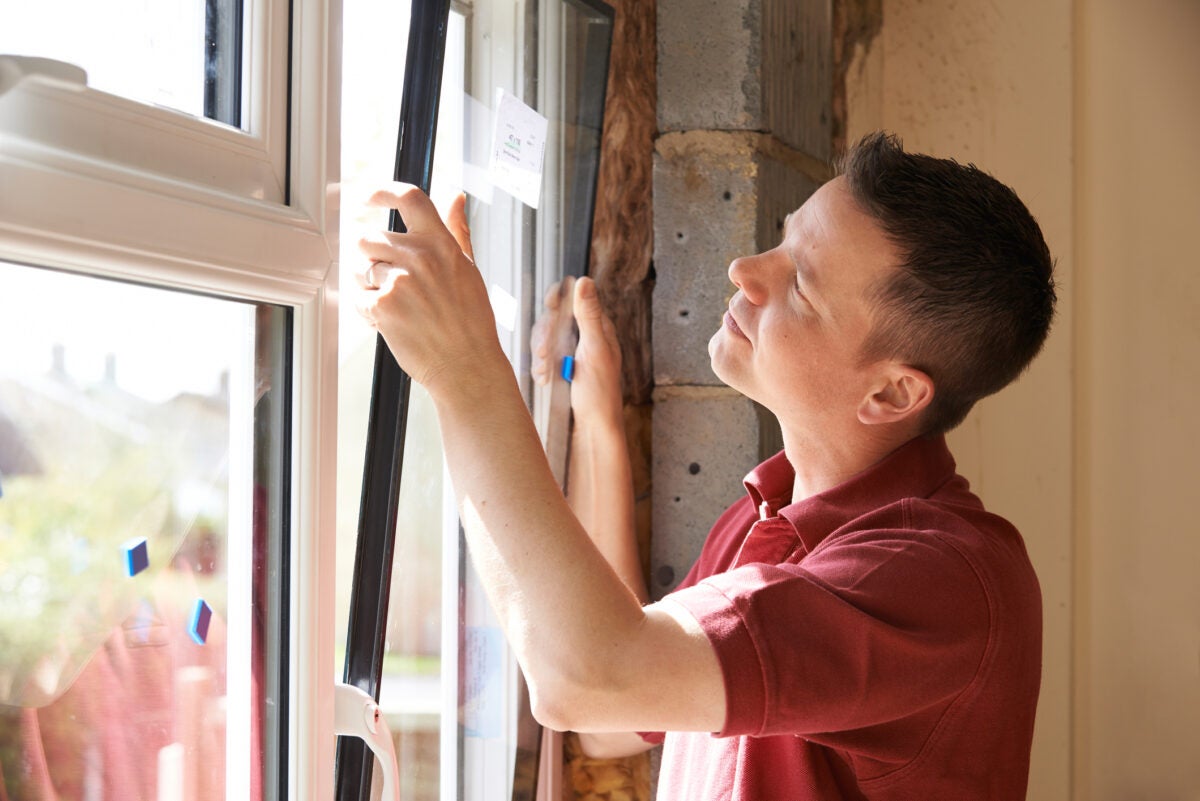
A Clear View for Northwest Window Solutions
High-Performance Windows
Representing the first major change to the ENERGY STAR® windows specification in more than a decade, the NEEA-influenced Version 7.0 Specification for Residential Windows, Doors and Skylights was finalized in October with lowered U-Factor requirements for the Northern Climate Zone.
This breakthrough follows years of collaboration between NEEA and the Partnership for Advanced Window Solutions (PAWS) to influence the national window-manufacturing market and thus elevate building efficiency and comfort in the Northwest. The newly lowered U-Factor requirements will provide a significant boost to the alliance’s Market Transformation efforts to motivate adoption of triple-pane windows that significantly reduce thermal transfer and reinforce the most vulnerable part of a building’s envelope.
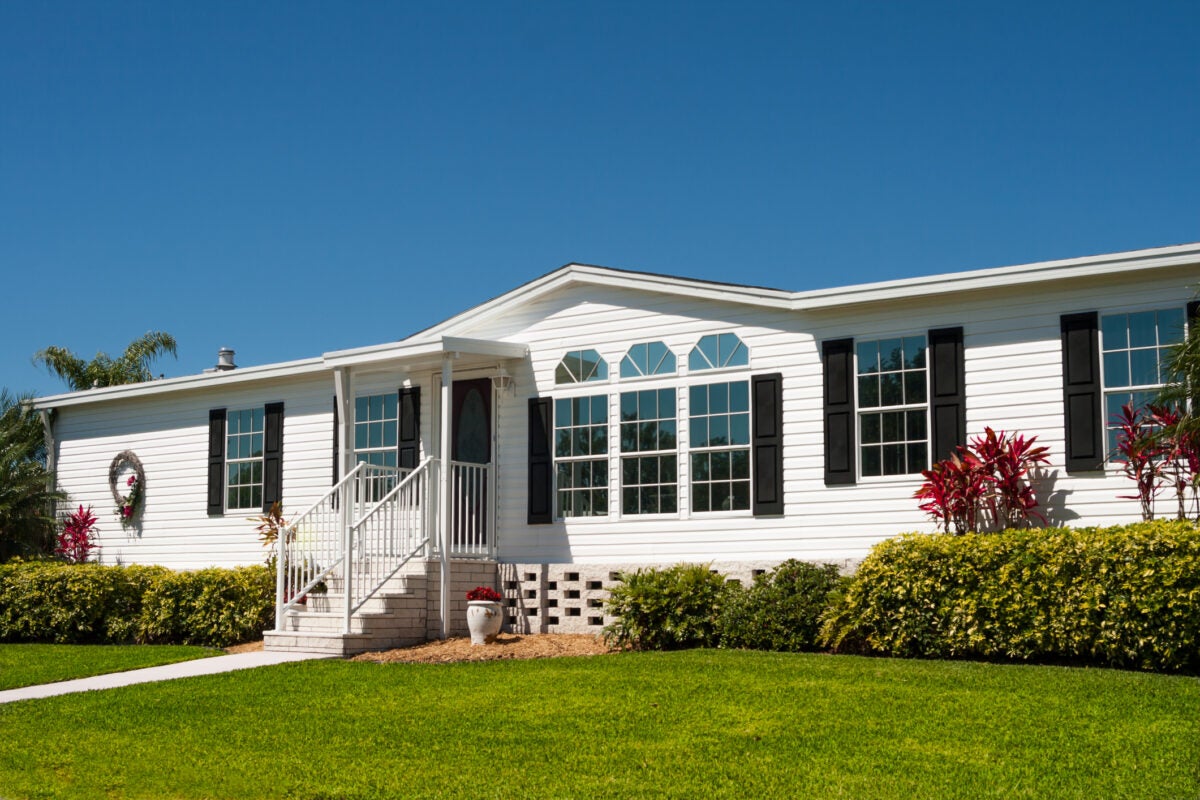
A New Standard, Decades in the Making
Manufactured Homes
In March 2022, the alliance’s decades-long regional collaboration with BPA and Northwest manufactured home builders achieved a major milestone: The first federal standard for manufactured homes in more than twenty-five years.
Largely based on data and experience provided by this longstanding Northwest collaboration, the U.S. Department of Energy’s new energy conservation standard features a two-tier structure that requires substantial improvements to double-wide and larger manufactured homes, along with modest enhancements for single-wide homes. Further, following the introduction of the new standard, ENERGY STAR® elevated its own specification above the federal standard to include a heat pump option, allowing for even greater efficiency. Through years of work building high-performance manufactured homes, evaluating costs and best practices, and validating modeled energy savings, the alliance and its partners have permanently leveled-up manufactured home efficiency.
Metrics and Investments
Market transformation is a long-term process that delivers permanent market change. The process seeks to find efficient innovations that can leverage the power of market forces to achieve the long-term goal of cost-effective energy efficiency. Alliance programs are designed to specifically address and overcome market barriers to enable accelerated market adoption of energy-efficient products, services and practices. The alliance’s Market Transformation process leverages multiple strategies to build a foundation based on past efforts, knowledge gained, data acquisition and analysis, and consistent third-party evaluation. For more than twenty-five years, the alliance has honed and adapted this proven set of strategies and tactics to support the region in providing a strong, cost-effective energy future for today’s consumers and future generations.
As depicted in the metrics below, alliance activities during a business cycle continue to deliver energy savings long after the 5-year investment period has ended. The following graphs and charts show energy savings associated with the activities and market changes that are taking place in the current funding cycle (current investments), as well as those that are continuing to deliver value long after NEEAs direct intervention has ended (previous investments) as a result of continued market progress and sustained market changes.
2022 Energy Savings Results
2022 Co-Created Electric Energy Savings
(All Investments)
NEEA estimates that the region achieved nearly 40 average megawatts (aMW) of Co-Created energy savings in 2022.
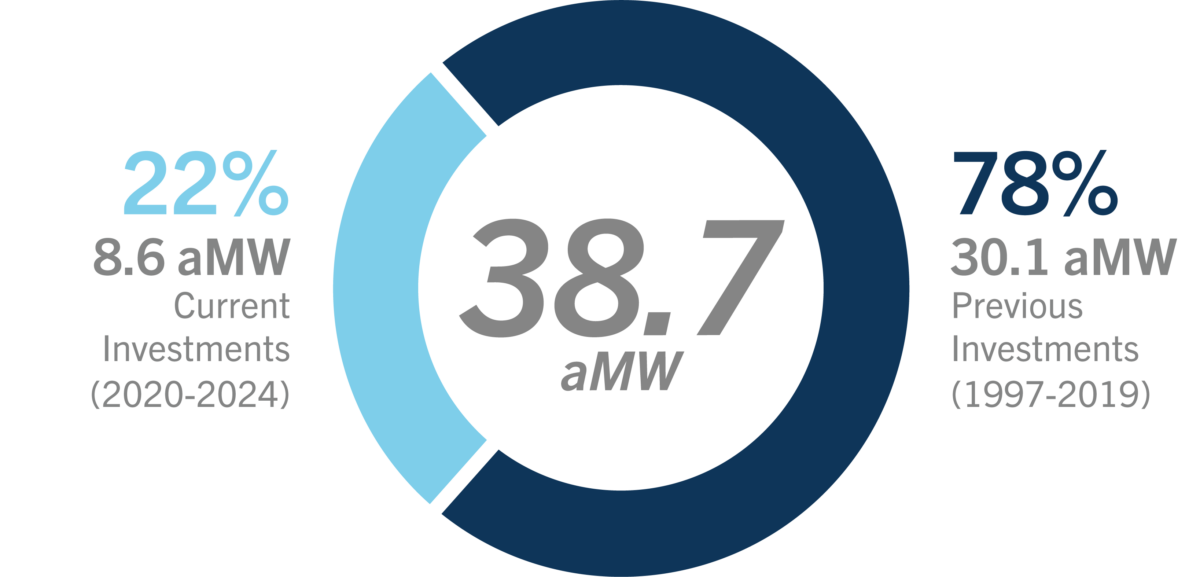
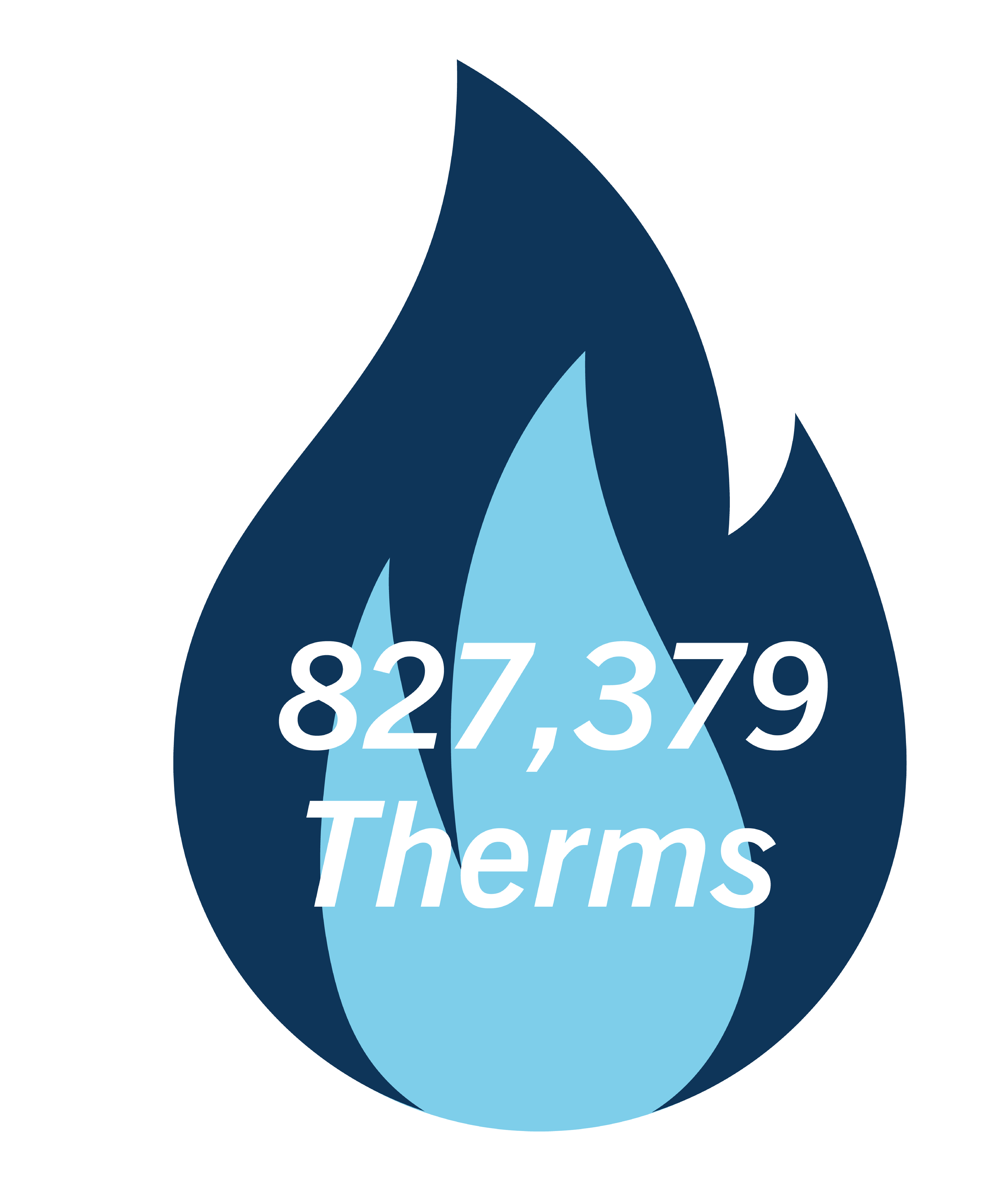
2022 Co-Created Natural Gas Savings
NEEA estimates that the alliance achieved 827,379 Therms of Co-Created natural gas savings in 2022. The majority of these savings are from residential code advancements in Idaho and Oregon.
The alliance’s natural gas portfolio is in early development.
Co-Created Electric Energy Savings
Progress to 5-year goals (All Investments)
For its Cycle 6 Business Plan (2020-2024), NEEA estimates that the region will achieve between 140-175 average megawatts (aMW) of Co-Created electric energy savings through the efforts of the alliance’s Market Transformation portfolio. This is equivalent to the amount of energy needed to power more than 120,000 Northwest homes each year.
Co-Created – or shared – energy savings include all savings above the baseline that occur in the market due to the combined efforts of NEEA and its partners.
1 aMW = enough energy to power about 730 Northwest homes per year
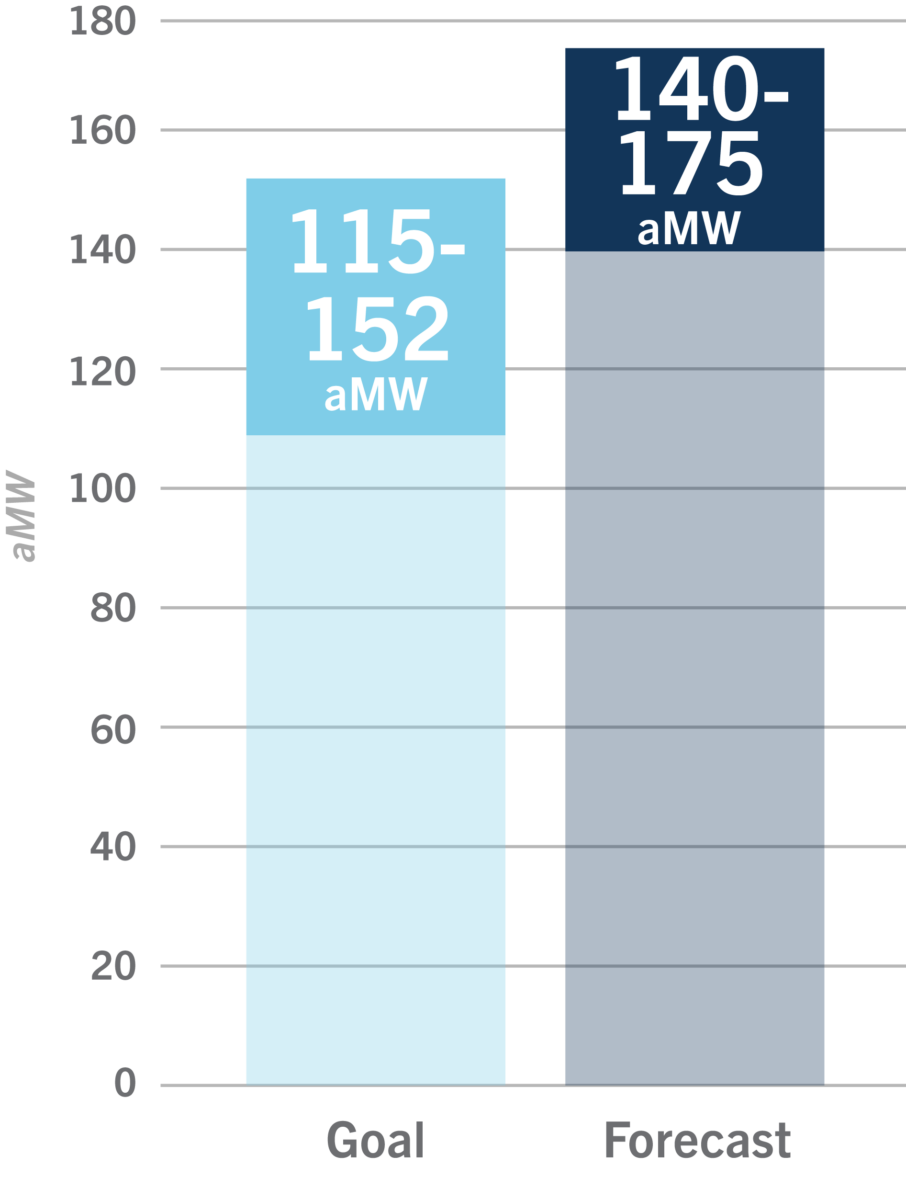
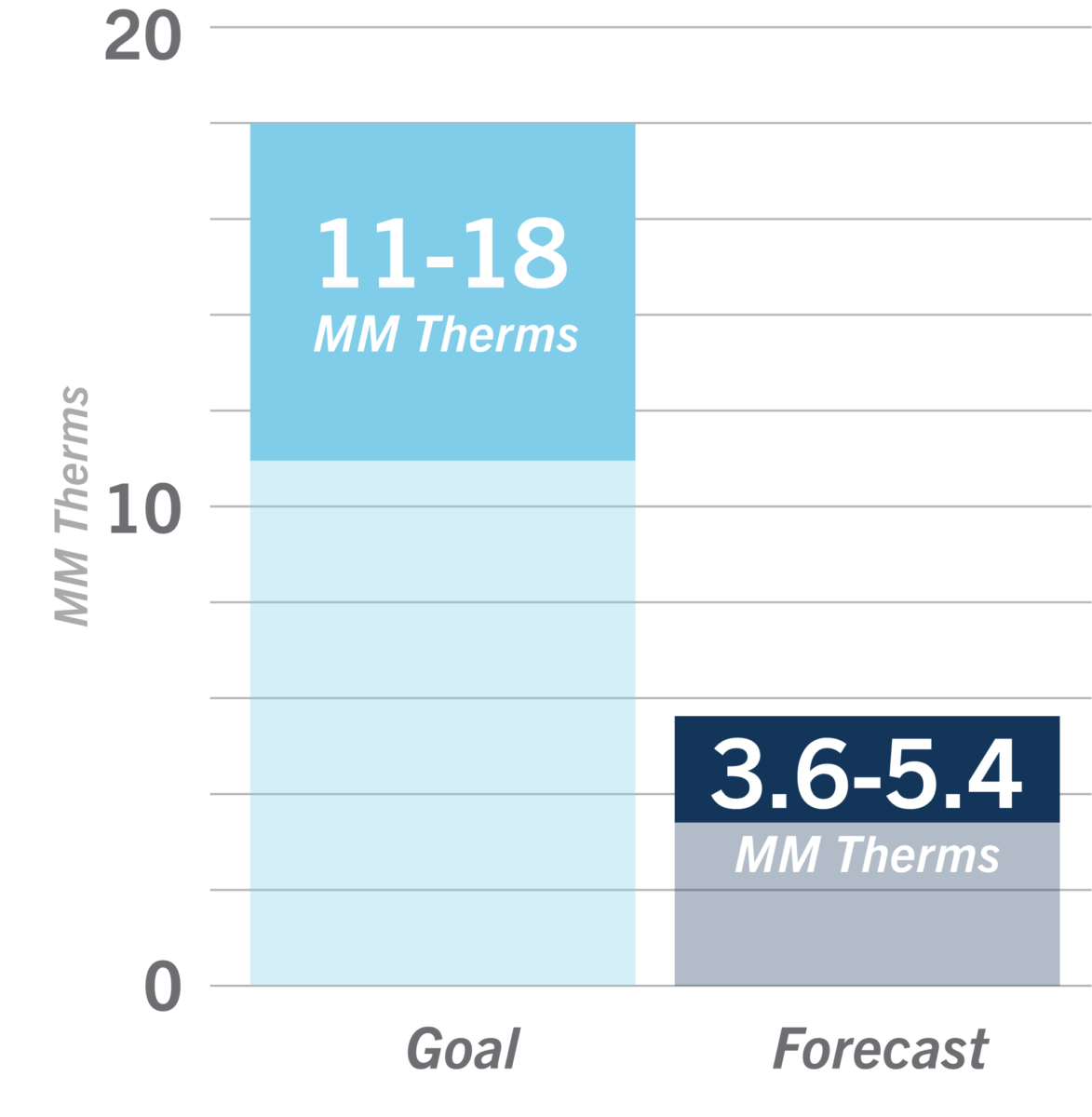
Total Regional Natural Gas Energy Savings
Progress to 5-year goals (All Investments)
NEEA estimates the region will achieve between 3.6 – 5.4 Million (MM) Therms of Total Regional natural gas energy savings through the efforts of the alliance’s Market Transformation portfolio during its Cycle 6 Business Plan (2020-2024). The forecast is driven by the market’s response to code updates in Washington, resulting in changes to new construction decision making.
Total Regional Savings include all savings calculated above the pre-intervention market starting point due to the combined efforts of NEEA and its partners.
20-year Electric Benefit-Cost Ratio*: 1.99
*Reflects the 20-year value of the regional investment in Market Transformation efforts. The alliance expects all programs to meet a benefit-cost ratio threshold of 1 or better.
2022 Regional Peak Demand Savings:
75 MW winter peak
2022 Avoided CO2 Emissions:
- Electric – 172,034 tons
- Natural Gas – 4,840 tons
Additive* Co-Created Savings (aMW): 1997–2022
While NEEA is funded in 5-year increments, market transformation is typically a 15–20-year endeavor. The following chart depicts how NEEA’s early direct intervention investments for each business cycle resulted in permanent market change that led to continued long-term energy savings.
Working together, the region has achieved more than 919 average megawatts (aMW) of Co-Created electric energy savings since 1997 – equivalent to enough energy to power more than 670,000 Northwest homes each year.
*Additive Energy Savings are defined as the sum of new first year savings occurring each year across multiple years.
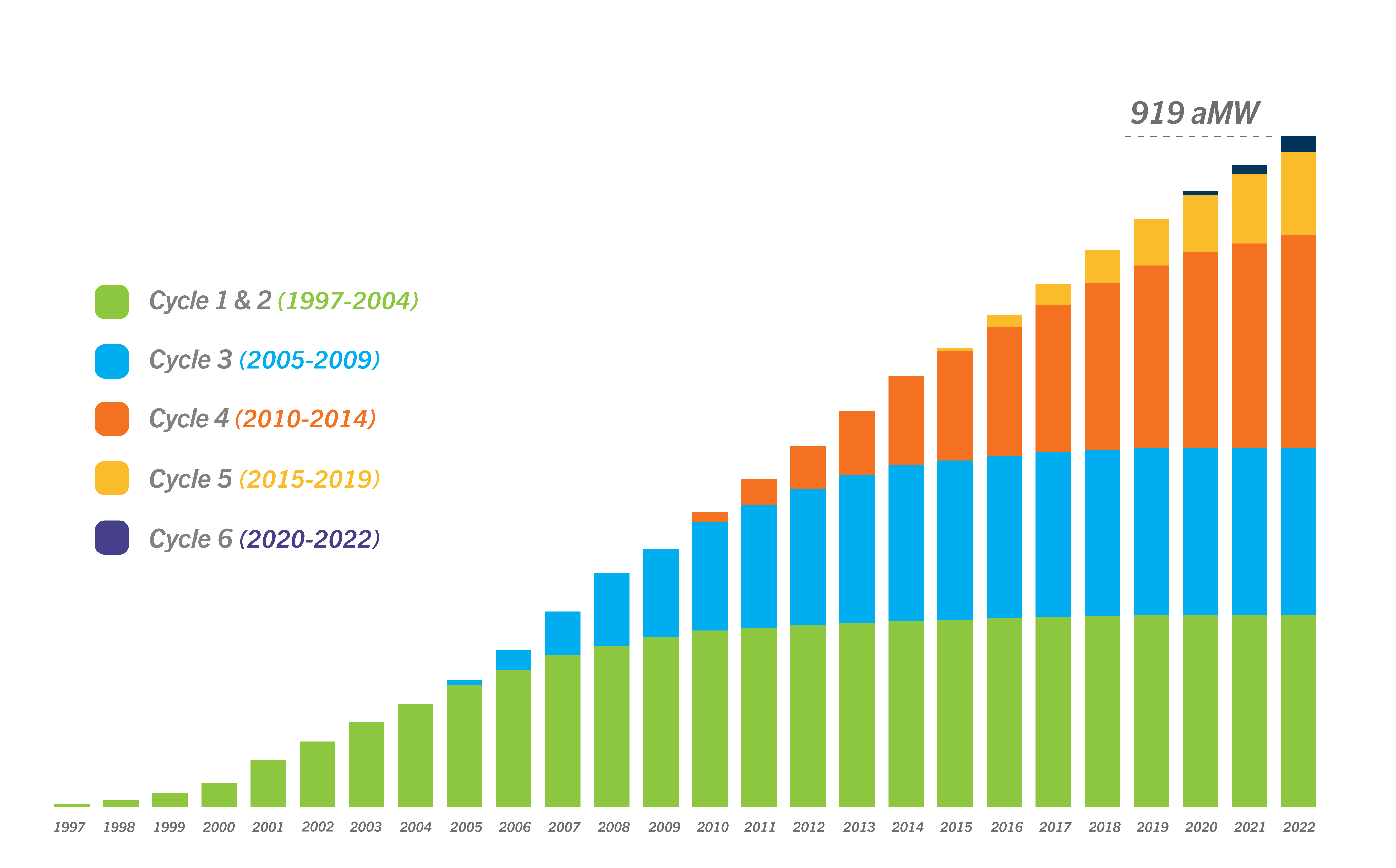
2022 Investments
Balance Sheet
As of December 31, 2022
| Assets | |
| Cash and cash equivalents | $3,450,003 |
| Short-term investments | $13,042,968 |
| Funder and other receivables | $377,156 |
| Prepaid expenses | $1,014,049 |
| Investment in CalMTA | $10,000 |
| Property and equipment | $2,242,864 |
| Total Assets | $24,703,354 |
| Liabilities and net assets | |
| Accounts payable and other liabilities | $5,518,312 |
| Advances from funders | $10,033,560 |
| Operating lease liability | $5,617,011 |
| Total liabilities | $21,168,883 |
| Net Assets | |
| Unrestricted | $3,395,604 |
| Temporarily restricted | $138,867 |
| Total Net Assets | $3,534,471 |
| Total Liabilities and Net Assets | $24,703,354 |
Statement of Activities
Year ending December 31, 2022
| Revenues | |
| Electric contributions | $30,069,328 |
| Natural Gas contributions | $3,808,849 |
| End Use Load Research Contributions | $3,146,728 |
| Special fund contributions | $2,998,634 |
| Interest and other income | $24,581 |
| Total Revenue | $40,048,120 |
| Expenses | |
| Compensation and benefits | $13,301,758 |
| General administration | $3,331,990 |
| Direct project costs | $24,041,063 |
| Total Expenses | $40,674,811 |
| Change in net assets | $(626,691) |
NEEA Board of Directors

Gilbert Archuleta
Puget Sound Energy
Director, Customer Energy Management
Dan Bedbury
Clark Public Utilities
Director, Energy Resources
Stephen Bicker
Tacoma Power
Sr. Manager, Customer Energy Programs
Holly Braun
NEEA Board Vice Chair
NW Natural
Manager, Energy Policy and Sustainability
Michael Colgrove
Energy Trust of Oregon
Executive Director
Monica Cowlishaw
Cascade Natural Gas
Manager, Energy Efficiency Community Service
Theresa Drake
NEEA Board Secretary
Idaho Power
Sr. Manager, Customer Relations and Energy Efficiency
Joseph Fernandi
Seattle City Light
Director of Customer Energy Solutions
Jennifer Finnegan
(left board in 2022)
Seattle City Light
Energy Planning Supervisor – Customer Care & Energy Solutions
Suzanne Frew
NEEA Board Treasurer
Snohomish County PUD
Sr. Program Manager
Andrew Grassell
Chelan County PUD
Manager, Energy Development and Conservation
Jamae Hilliard Creecy
Bonneville Power Administration
Vice President of Energy Efficiency
Nycole Hydzik
Avista Utilities
Manager, Energy Solutions and Efficiency
Anna Lising
Washington Governor’s Representative
Senior Energy Policy Advisor
Patrick Oshie
(left board in 2022)
Northwest Power and Conservation Council
Washington Council Member
Ben Otto
(left board in 2022)
Idaho Conservation League
Attorney
Eileen Quigley
Clean Energy Transition Institute
Founding Executive Director
Kyle Roadman
Emerald PUD
Power Manager
Bonnie Rouse
Montana Energy Office
Recycling, Energy and Compliance Assistance
Ruchi Sadhir
Oregon Governor’s Representative, Oregon Department of Energy
Associate Director, Strategic Planning
Cory Scott
Pacific Power
Director, Customer Solutions
Richard Stover
(joined board in 2023)
Idaho Office of Energy and Mineral Resources
Administrator
Marissa Warren
(left board in 2023)
Idaho Office of Energy and Mineral Resources
Energy Program Manager
Danie Williams
NorthWestern Energy
Manager of Energy Efficiency/DSM Services
Deb Young
(retired in 2022)
NorthWestern Energy
Program Consultant